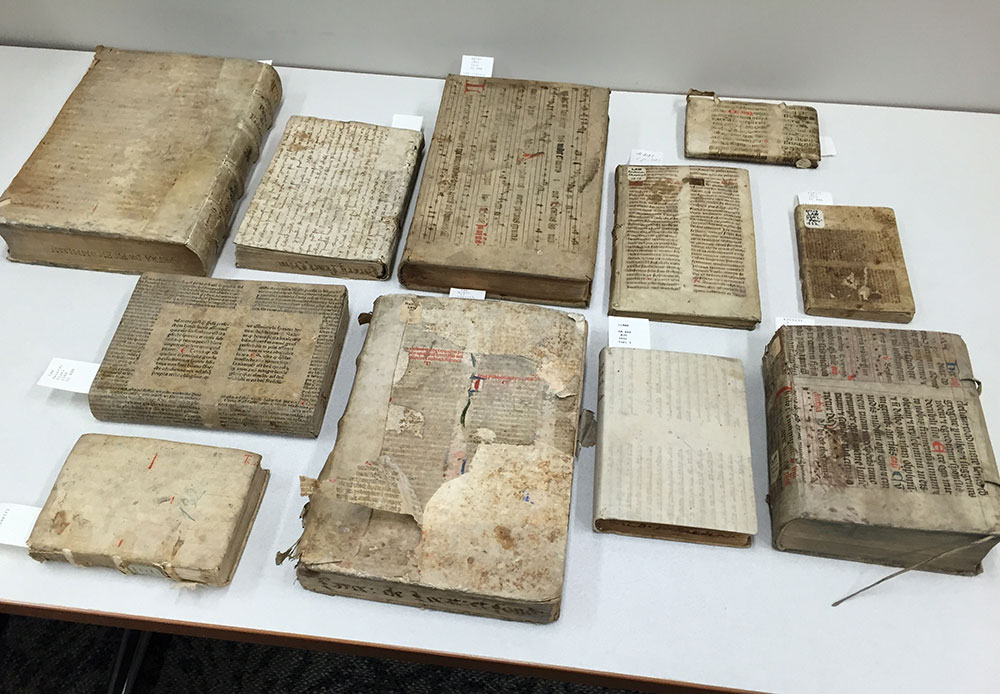Disclaimer: The information on our website is provided for general information purposes only. We make no representations or warranties of any kind, express or implied, about the completeness, accuracy, reliability, suitability or availability with respect to the website or the information contained on our website for any purpose. Any reliance on such information is therefore strictly at your own risk and we are not liable for any damages or losses arising out of or resulting from your reliance on any information contained on our website.
According to the American Library Association, conservation is “an interdisciplinary field involving studio practices, sciences, and the humanities” and a rare book conservator uses these various disciplines to preserve rare books and manuscripts. Their main goal is to use preservation techniques to preserve and attempt to stop erosion on the items they are working with.
Watch a video to learn what a rare book conservator does as a book from the 1850’s is refurbished:
How to Become a Rare Book Conservator
Due to the interdisciplinary nature of the conservation profession, most employers require a master’s degree in conservation. Before entering a graduate program to gain your master’s degree, you’ll most likely also need internship or apprenticeship experience. According to the American Institute for Conservation of Historic and Artistic Works (or AIC), there are bachelor’s degree programs that are designed to prepare you for a master’s in conservation. After graduation, the AIC states that “fellowships and contract or project-based positions are common in the first years after graduation.”
Rare Book Conservator Career Video Transcript
Interview with Yasmeen Khan, Rare Book Conservator at the Library of Congress.
As you can see the book was in terrible condition when I got it all this was missing. All this was missing. All this was missing and it was very, very dark. So each page was carefully washed and the paints were consolidated so they wouldn’t fall off. So right now I’m working on two projects. One is a large scale project dealing with the digitization of the library’s collections, so I stabilize them with my colleagues for digitization and scanning.
The other project is the conservation and rebinding of a Medieval manuscript from Germany, from 1475. Books are like a mirror into the past, so when you pull them apart, you sort of get an idea of what people were thinking when the put the book together in the first place. Like Yasmeen, others at the library not only restore and preserve books but also audio recordings, photographs, films, and newspapers.
At the Library of Congress you can see a rough draft of the Declaration of Independence and you can see Waldseemuller’s Map, which is the first map that shows America and names it. You can see Thomas Jefferson’s library, the library that he gave to Congress that was the seed of the Library of Congress. The website for the Library of Congress is LOC.gov.
Article Citations
Growth rate is located on the Bureau of Labor Statistics, U.S. Department of Labor website: Museum Technicians and Conservators.
Salary information is located on a job posting on the Conservators Converse, a blog of the American Institute for Conservation of Historic and Artistic Works (AIC). 2015. Job Posting: Book Conservator, Library of Congress.
American Library Association. Rare Books and Manuscripts Section. Careers FAQ.
American Institute for Conservation of Historic and Artistic Works. Careers in Conservation. Become a Conservator.
The career video is in the Public Domain and originally hosted on Kids.gov which is now USA.gov, an interagency product administered by USAGov, a division of the U.S. General Services Administration’s Technology Transformation Service.

